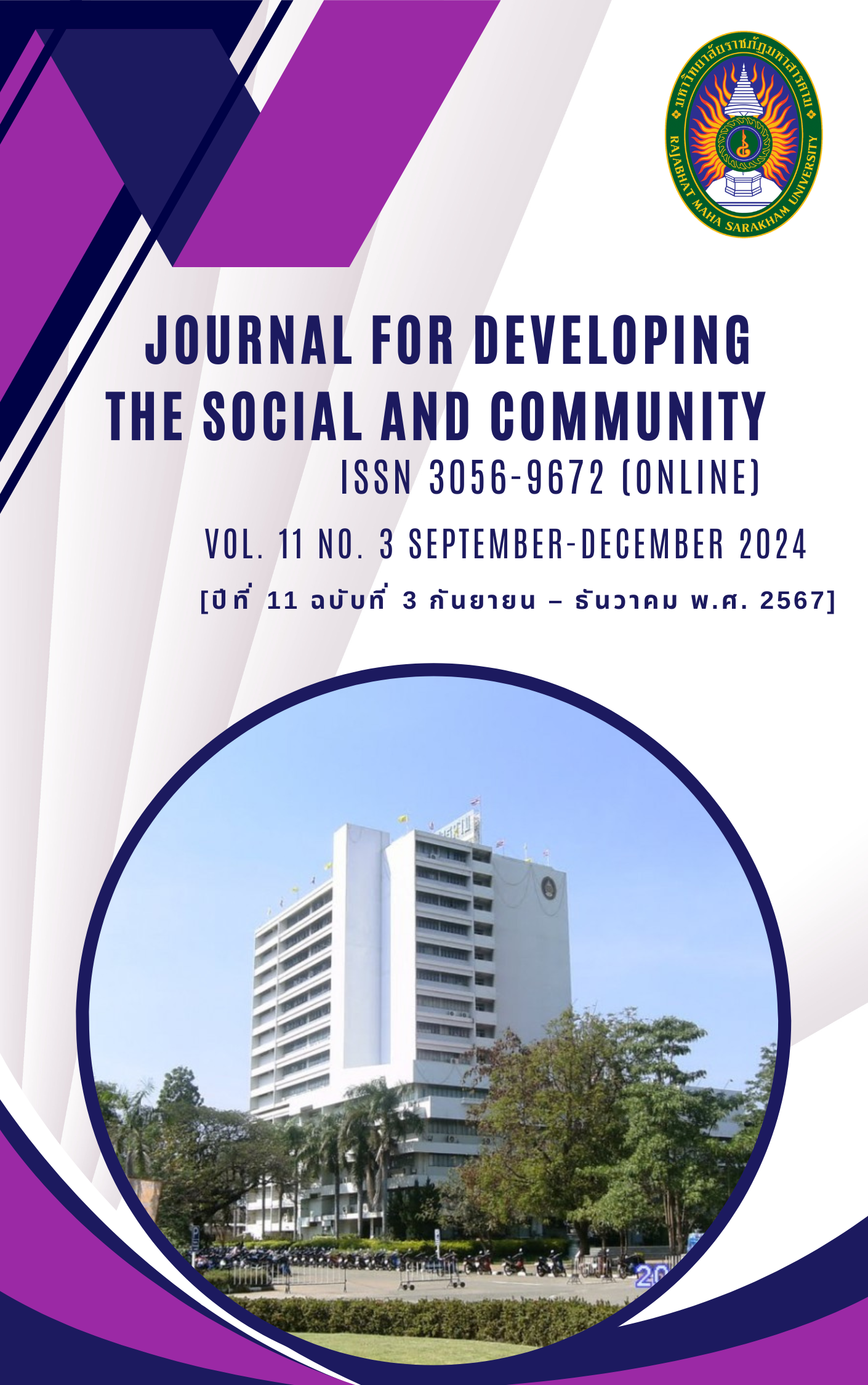Guidelines for promoting the quality of life and adaptation of the elderly in Krasob Subdistrict, Mueang District, Ubon Ratchathani Province
Keywords:
Guidelines, quality of life, adjustment of the elderlyAbstract
The research aimed to study the quality of life, adaptation, and ways to promote the quality of life and adaptation of the elderly in Krasob Subdistrict, Mueang District, Ubon Ratchathani Province. The sample consisted of 278 elderly people selected by simple random sampling. The research instruments were questionnaires and interview forms. The data were analyzed by descriptive statistics, independent t-test, and one-way analysis of variance. The sample group consisted of 278 elderly people who were selected by simple random sampling. The research instruments were questionnaires and interview forms. The data were analyzed by descriptive statistics, independent t-test, and one-way analysis of variance. The results of the research found that: The quality of life of the elderly in Krasob Subdistrict, Mueang District, Ubon Ratchathani Province was mostly at a moderate level overall. When considering each aspect, most elderly people had a moderate quality of life, with only one aspect of quality of life at a high level, which was the physical aspect. When considering the aspect of adaptation, most elderly people had a high overall adaptation in all aspects, namely, the aspect of dependency, the aspect of role, and the aspect of self-concept, respectively. The guidelines for promoting the quality of life and adaptation of the elderly in Krasob Subdistrict, Mueang District, Ubon Ratchathani Province in accordance with the community context and the needs of the elderly consist of 4 aspects: 1) Health - Promoting activities to promote physical and mental health of the elderly, such as organizing health training activities, exercise, health markets, and mental health promotion activities; 2) Social - Promoting social activities to create opportunities for exchanging experiences in health care and to enhance the value of the elderly; 3) Cultural - Supporting activities related to Buddhist holidays, community traditions, and passing on culture to the next generation; 4) Economic - Supporting activities related to training in the production of sweets and the production of Bai Sri trays to create jobs and income for the elderly. In addition, the plan for developing the quality of life of the elderly should be designed and implemented in a concrete manner.
References
Andrew, H. A. & Roy, C. (1991). Essential of the Roy adaptation model. In The Roy adaptation model: The definitive statement. Connecticut: Appleton & Lange.
Chudech, S. (2003). General Psychology Study Guide. Bangkok: King Mongkut's University of Technology Thonburi.
Erikson Erik H. (1966). Eight ages of man. International Journal of Psychiatry, 2(3), 281- 300.
Khamkong, D. (2011). Factors affecting the quality of life of the elderly in Lamsing Subdistrict, Srinakarin District, Phatthalung Province. Master of Science Thesis: Thaksin University.
Khamsuwan, C. (2007). Management of the Songkhla Hospital Elderly Club, Mueang Songkhla District, Songkhla Province. Master of Arts Thesis: Thaksin University.
Krasob Subdistrict Administrative Organization. (2023). Local Development Plan (2023–2027). Ubon Ratchathani: Krasob Subdistrict Administrative Organization.
Lawanalaphanon, L. (2015). Quality of life and adaptation of the elderly in Khlong Ri Subdistrict, Sathing Phra District, Songkhla Province. Master's Degree: Thaksin University.
Likert, R. (1961). New Pattern of Management. New York: McGraw-Hill.
Mahatnirunkul, S. (2002). Stress Scale. Chiang Mai: Suan Prung Hospital, Department of Mental Health, Ministry of Public Health.
Mahatnirunkul, S. et al. (1998). Comparison of the World Health Organization's Quality of Life Scales for All 100 Indicators and 26 Indicators. Chiang Mai: Suan Prung Hospital.
National Elderly Commission. (2014). Situation of Thai Elderly 2014. Retrieved from http://WWW.dop.go.th
Paichit, P. (2015). Quality of life of the elderly in Surat Thani Province. Journal of Management Science, Surat Thani Rajabhat University, 2(2), 157-179.
Scott, H. Berk. (1982). Adjustment to and Satisfaction with Retirement. Journal Gerontology, 7(September), 623.
Sinlapacharu, T. (2012). Research and statistical data analysis with SPSS. (11sted). Bangkok: Business R&D.
Sodsong, K. (2018). Quality of life of the elderly in Phra Nakhon Si Ayutthaya Municipality, Phra Nakhon Si Ayutthaya Province. Journal of MBU Education, 6(1), 162-175.
Wongsuphalak, W. (2009). Adjustment of the Elderly Bank of Thailand Employees. Master of Arts Thesis: Kasetsart University.
World Health Organization. (1994). Division of Mental Health. Life Skills Education for Children and Adolescents in Schools. Geneva: World Health Organization.
Yotsan, C. (2008). Understanding the core teachings of Buddhism and the adaptation of the elderly. Master of Science Thesis: Ramkhamhaeng University.
Downloads
Published
How to Cite
Issue
Section
License
Copyright (c) 2024 Journal for Developing the Social and Community

This work is licensed under a Creative Commons Attribution-NonCommercial-NoDerivatives 4.0 International License.
Articles that are published are copyrighted by the authors of the articles







